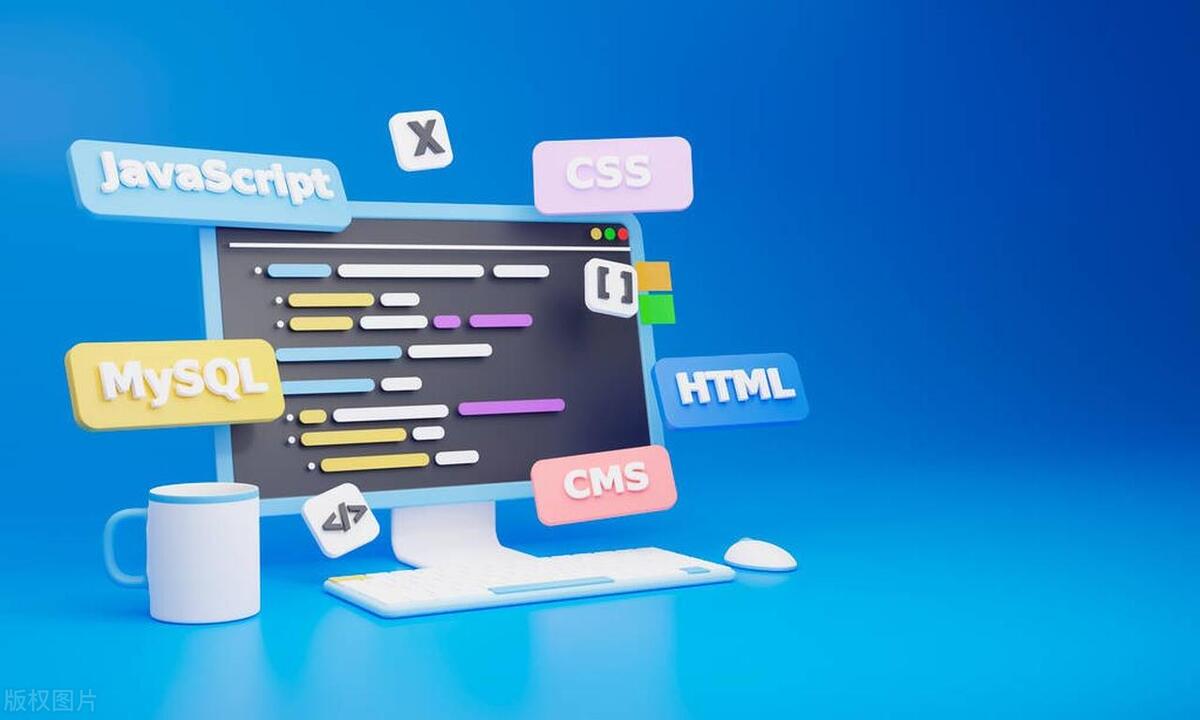A/B testing is effective in front-end development because it is based on data-driven decision-making, by comparing different versions of web pages or application interfaces, to determine which version performs better. To successfully implement A/B tests, you need to follow the following steps: first set clear goals, such as increasing click-through rate, extending session time or increasing conversion rate, and ensuring that the goals are consistent with the business goals; secondly, choose tools suitable for the technology stack, such as third-party platforms such as Optimizely or custom solutions such as LaunchDarkly; then implement variants in a modular way to avoid destroying the UI and ensuring the stability of the variant during the user's session; finally, continuously monitor the results, judge the test stop time based on statistical significance, and avoid misjudging the effectiveness due to external factors.

A/B testing is one of the most effective ways to make data-driven decisions in frontend development. It allows you to compare different versions of a webpage or app interface and see which performs better with real users. Whether you're tweaking button colors, trying out new layouts, or adjusting copy, A/B testing gives you concrete evidence on what works — and what doesn't.

Setting Up Clear Goals Before You Start
Before diving into implementation, it's cruel to define what success looks like. This could be anything from increased click-through rates to longer session durations or higher conversion rates. Without clear goals, your test results might be confusing or misleading.
- Ask yourself: What action do I want users to take?
- Choose a single primary metric per test to avoid diluting results.
- Align your goals with business objectives (eg, more signups or faster checkout).
Once you've defined your goal, map out the user flow that leads to it. That way, any changes you test will directly impact the desired outcome.

Choosing the Right Tools for Your Stack
There are many tools available for A/B testing, and choosing the right one depends largely on your tech stack and team size.
For quick wins without much engineering effort, third-party platforms like Optimizely , Google Optimize (discontinued, but similar tools exist), or VWO can be great. They usually offer visual editors so marketers or product folks can create variations without touching code.

If you're working on a custom solution or prefer more control:
- Use feature flags via services like LaunchDarkly or Split
- Build a lightweight internal system using cookies or URL parameters
- Integrate with analytics tools (like GA4 or Mixpanel) to track events
Make sure your tooling supports client-side rendering if you're using frameworks like React, Vue, or Angular.
Implementing Variations Without Breaking the UI
When implementing variations in your frontend code, keep things clean and modular. Messy implementations can lead to bugs, inconsistent experiences, or even skewed results.
One common approach is to use conditional rendering based on the variant assigned to the user. For example:
if (variant === 'B') {
return <NewSignupForm />;
} else {
return <OriginalSignupForm />;
}Here are a few best practices:
- Keep variants isolated in separate components or stylesheets
- Avoid inline DOM manipulation; stick to declarative updates
- Use consistent naming conventions for tracking events
- Load both versions upfront only if performance allows
Also, make sure that users don't switch between variants during their session. Stickiness ensures reliable data.
Monitoring Results and Knowing When to Stop
Once your test is live, monitoring becomes key. Letting a test run too long can waste resources, while stopping too early can lead to false conclusions.
Use statistical significance as a guide, not just gut feeling. Most tools will show confidence levels automatically. But here's a quick checklist:
- Did you reach the minimum sample size?
- Is there a clear winner across different segments (desktop vs mobile)?
- Are external factors affecting results (like holidays or promotions)?
Avoid peeking at results daily — set a timeframe in advance. And remember, not every test will yield a winner. Sometimes, no variation significantly improves performance, and that's OK.
Implementing A/B testing in frontend development isn't overly complicated, but it does require planning and attention to detail. From setting clear goals to choosing the right tools and handling variations cleanly, each step plays a role in getting useful insights. If you follow these steps, you'll be able to iterate smarter and improve user experience over time — without guessing.
The above is the detailed content of Implementing A/B Testing in Frontend Development. For more information, please follow other related articles on the PHP Chinese website!

Hot AI Tools

Undress AI Tool
Undress images for free

Undresser.AI Undress
AI-powered app for creating realistic nude photos

AI Clothes Remover
Online AI tool for removing clothes from photos.

Clothoff.io
AI clothes remover

Video Face Swap
Swap faces in any video effortlessly with our completely free AI face swap tool!

Hot Article

Hot Tools

Notepad++7.3.1
Easy-to-use and free code editor

SublimeText3 Chinese version
Chinese version, very easy to use

Zend Studio 13.0.1
Powerful PHP integrated development environment

Dreamweaver CS6
Visual web development tools

SublimeText3 Mac version
God-level code editing software (SublimeText3)
 How does React handle focus management and accessibility?
Jul 08, 2025 am 02:34 AM
How does React handle focus management and accessibility?
Jul 08, 2025 am 02:34 AM
React itself does not directly manage focus or accessibility, but provides tools to effectively deal with these issues. 1. Use Refs to programmatically manage focus, such as setting element focus through useRef; 2. Use ARIA attributes to improve accessibility, such as defining the structure and state of tab components; 3. Pay attention to keyboard navigation to ensure that the focus logic in components such as modal boxes is clear; 4. Try to use native HTML elements to reduce the workload and error risk of custom implementation; 5. React assists accessibility by controlling the DOM and adding ARIA attributes, but the correct use still depends on developers.
 Describe the difference between shallow and full rendering in React testing.
Jul 06, 2025 am 02:32 AM
Describe the difference between shallow and full rendering in React testing.
Jul 06, 2025 am 02:32 AM
Shallowrenderingtestsacomponentinisolation,withoutchildren,whilefullrenderingincludesallchildcomponents.Shallowrenderingisgoodfortestingacomponent’sownlogicandmarkup,offeringfasterexecutionandisolationfromchildbehavior,butlacksfulllifecycleandDOMinte
 What is the significance of the StrictMode component in React?
Jul 06, 2025 am 02:33 AM
What is the significance of the StrictMode component in React?
Jul 06, 2025 am 02:33 AM
StrictMode does not render any visual content in React, but it is very useful during development. Its main function is to help developers identify potential problems, especially those that may cause bugs or unexpected behavior in complex applications. Specifically, it flags unsafe lifecycle methods, recognizes side effects in render functions, and warns about the use of old string refAPI. In addition, it can expose these side effects by intentionally repeating calls to certain functions, thereby prompting developers to move related operations to appropriate locations, such as the useEffect hook. At the same time, it encourages the use of newer ref methods such as useRef or callback ref instead of string ref. To use Stri effectively
 Vue with TypeScript Integration Guide
Jul 05, 2025 am 02:29 AM
Vue with TypeScript Integration Guide
Jul 05, 2025 am 02:29 AM
Create TypeScript-enabled projects using VueCLI or Vite, which can be quickly initialized through interactive selection features or using templates. Use tags in components to implement type inference with defineComponent, and it is recommended to explicitly declare props and emits types, and use interface or type to define complex structures. It is recommended to explicitly label types when using ref and reactive in setup functions to improve code maintainability and collaboration efficiency.
 Server-Side Rendering with Next.js Explained
Jul 23, 2025 am 01:39 AM
Server-Side Rendering with Next.js Explained
Jul 23, 2025 am 01:39 AM
Server-siderendering(SSR)inNext.jsgeneratesHTMLontheserverforeachrequest,improvingperformanceandSEO.1.SSRisidealfordynamiccontentthatchangesfrequently,suchasuserdashboards.2.ItusesgetServerSidePropstofetchdataperrequestandpassittothecomponent.3.UseSS
 A Deep Dive into WebAssembly (WASM) for Front-End Developers
Jul 27, 2025 am 12:32 AM
A Deep Dive into WebAssembly (WASM) for Front-End Developers
Jul 27, 2025 am 12:32 AM
WebAssembly(WASM)isagame-changerforfront-enddevelopersseekinghigh-performancewebapplications.1.WASMisabinaryinstructionformatthatrunsatnear-nativespeed,enablinglanguageslikeRust,C ,andGotoexecuteinthebrowser.2.ItcomplementsJavaScriptratherthanreplac
 Vue CLI vs Vite: Choosing Your Build Tool
Jul 06, 2025 am 02:34 AM
Vue CLI vs Vite: Choosing Your Build Tool
Jul 06, 2025 am 02:34 AM
Vite or VueCLI depends on project requirements and development priorities. 1. Startup speed: Vite uses the browser's native ES module loading mechanism, which is extremely fast and cold-start, usually completed within 300ms, while VueCLI uses Webpack to rely on packaging and is slow to start; 2. Configuration complexity: Vite starts with zero configuration, has a rich plug-in ecosystem, which is suitable for modern front-end technology stacks, VueCLI provides comprehensive configuration options, suitable for enterprise-level customization but has high learning costs; 3. Applicable project types: Vite is suitable for small projects, rapid prototype development and projects using Vue3, VueCLI is more suitable for medium and large enterprise projects or projects that need to be compatible with Vue2; 4. Plug-in ecosystem: VueCLI is perfect but has slow updates,
 How to manage component state using immutable updates in React?
Jul 10, 2025 pm 12:57 PM
How to manage component state using immutable updates in React?
Jul 10, 2025 pm 12:57 PM
Immutable updates are crucial in React because it ensures that state changes can be detected correctly, triggering component re-rendering and avoiding side effects. Directly modifying state, such as push or assignment, will cause React to be unable to detect changes. The correct way to do this is to create new objects instead of old objects, such as updating an array or object using the expand operator. For nested structures, you need to copy layer by layer and modify only the target part, such as using multiple expansion operators to deal with deep attributes. Common operations include updating array elements with maps, deleting elements with filters, adding elements with slices or expansion. Tool libraries such as Immer can simplify the process, allowing "seemingly" to modify the original state but generate new copies, but increase project complexity. Key tips include each






